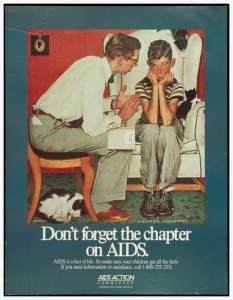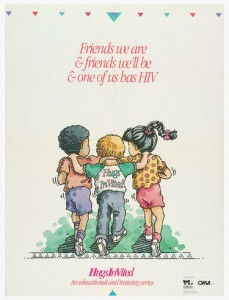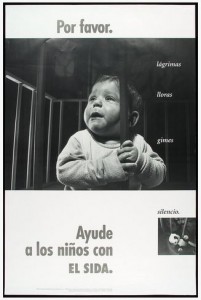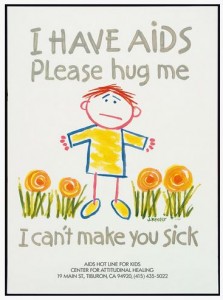Today, World AIDS Day unites us in support of those who are surviving with the disease, in commemoration of those who have died and in a shared dedication to finding a cure.
Recent scientific efforts have brought an increase in long-awaited treatments that can help to mitigate the effects and rate of transmission of HIV/AIDS. And yet with a rise in infection rates in the past few years among the most vulnerable risk groups, the crisis is far from over.
The AIDS Education Collection, housed in the University of Rochester’s River Campus Libraries’ Rare Books and Special Collections department, is comprised of more than 8,000 posters from 124 countries in 68 languages and dialects. It documents three decades of public awareness of the AIDS epidemic, revealing the evolution in how AIDS has been viewed and confronted, and the revolutions in attitudes toward the communities it has hit hardest.
When Edward Atwater, M.D., boarded a subway car on Boston’s Red Line in the early ‘90s he found himself staring at a poster unlike any he had seen before. It showed two hands, a condom wrapper, and text reading Prevent AIDS. Use One. Intrigued by what he saw, Atwater began to track how different societies viewed and responded to the worldwide epidemic through posters and other public messages, eventually gathering together the largest collection of AIDS posters in the world.
The posters were given to the University of Rochester by Atwater beginning in 2007.
“The Atwater collection of AIDS education posters tells a great deal about different societies’ understanding of sexuality and raises questions about the politics of visibility over the past 30 years,” said Joan Saab, professor of art history and director of Rochester’s graduate program for visual cultural studies. “When thinking about the history of AIDS, the story needs to be told from every angle. This includes graphic and controversial topics like sex and drugs and the different responses of filmmakers who choose to communicate awareness through public service announcements and artists who lend their voice and work towards the cause,” said Saab.
Throughout the collection there are posters which are aimed toward educating young children, the elderly, and everyone in between, about HIV/AIDS prevention, risks, social advocacy, and compassion for those affected. Posters – as an art form and as a medium of communication – are graphic. As long as HIV/AIDS continues to affect people of all ages around the world, the purposes for which these posters were originally created will continue to be relevant.
The Atwater collection of AIDS posters is now online, providing a visual history of the first three decades of the HIV/AIDS crisis from 1981 to the present.















